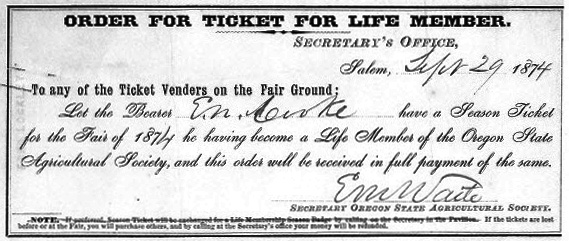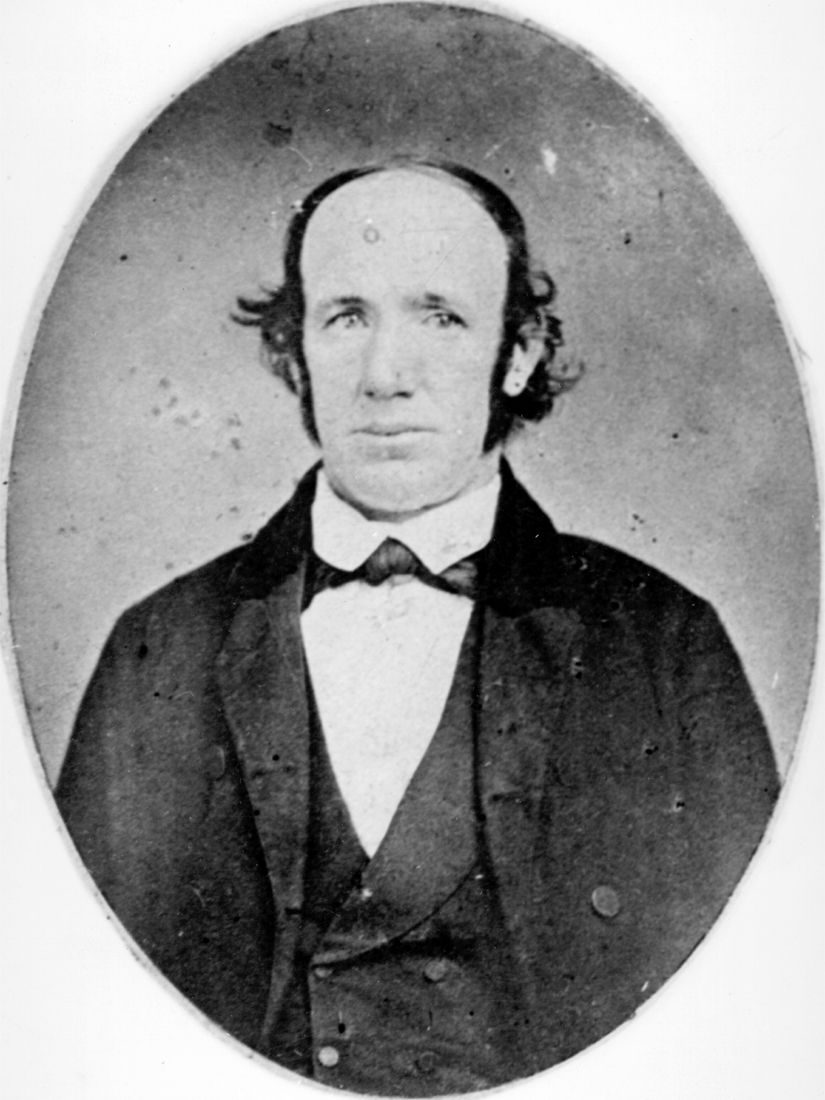On February 22 and 23, 1860, delegates from nine Oregon county agricultural societies and the Oregon Fruit Growers Association (OFGA) met in Salem and formed the Oregon State Agricultural Society (OSAS). At a second meeting held in Salem in September 1860, the OFGA formally merged with the OSAS, and ten more counties became members. Support had been growing for a statewide organization since the advent of the state’s first agricultural society in Yamhill County in October 1853. Among the organizing delegates were several prominent citizens, including William H. Rector, a farmer and entrepreneur who would soon be appointed by President Lincoln as Oregon’s superintendent of Indian affairs; Lucien Heath, Oregon secretary of state; and John Minto, a prominent sheep farmer who became a state legislator and editor of the Willamette Farmer.
The most recognizable feature of the county and state societies were the annual fairs they produced and managed. During the first four days in October 1861, the OSAS held the first state fair at a location near Oregon City on the north bank of the Clackamas River. This site proved unsuitable, and in 1862 the OSAS opened the state fair at its permanent location in Salem.
Agricultural improvement was the principle motivation for Oregon’s agricultural societies. Organizers believed that higher standards of production would both elevate agriculture’s image and realize economic gain. Events that included competitive exhibits were at the heart of these aspirations, because it was widely accepted that award-winning entries would inspire emulation and progress. At the first state fair, there were 142 exhibitors and $758 paid for 262 awards in 9 classes of exhibits: livestock, farm machinery, grains, mining products, household goods, art and homework, dairy products, fruits and flowers, and a miscellaneous category that included equestrianism, music, and essays. Everyone, regardless of age, was invited to participate in the competitions.
Although some of the nation's state agricultural societies were politically active, the OSAS neither sought nor gained much political influence. Despite requests to the state for funds to help run the fair, money was not appropriated until 1885, when the legislature created the Oregon State Board of Agriculture. Under this twelve-member board, the OSAS retained management of the fair while the board members, eight chosen by the governor and four by the OSAS, acted as an overseer. D.H Looney, pioneer and life-member of the OSAS, stated that before the state became involved the society ran the fair on gate receipts, and if there was not enough money to pay the bills “we raised enough on our own notes to run it another year.”
In 1899, the legislature rescinded the provision allowing the OSAS to choose members of the agricultural board. In 1913, the legislature created the Department of State Fair Directors, with all members appointed by the governor, and gave the agency total control of the state fair. Although effectively out of a job, so-called life-members of the OSAS held annual reunions on the fairgrounds during the fair into the late 1930s.
-
![Life members were entitled to free passes to the annual state fair. Mr. Cooke served as Oregon State Treasurer (1862-1870)]()
Season Ticket for the 1874 Oregon State Fair to Edwin N. Cooke.
Life members were entitled to free passes to the annual state fair. Mr. Cooke served as Oregon State Treasurer (1862-1870) Courtesy Washington County Museum, Albert Tozier Papers
Related Entries
Map This on the Oregon History WayFinder
The Oregon History Wayfinder is an interactive map that identifies significant places, people, and events in Oregon history.
Further Reading
Himes, George H. “History of Organization of Oregon State Agricultural Society.” Oregon Historical Quarterly 8:4 (Dec. 1907): 317-352.
Rockwood, Eleanor R. “Oregon Document Checklist V: Officials, Boards.” Oregon Historical Quarterly 46:2 (June 1945): 157-169.




